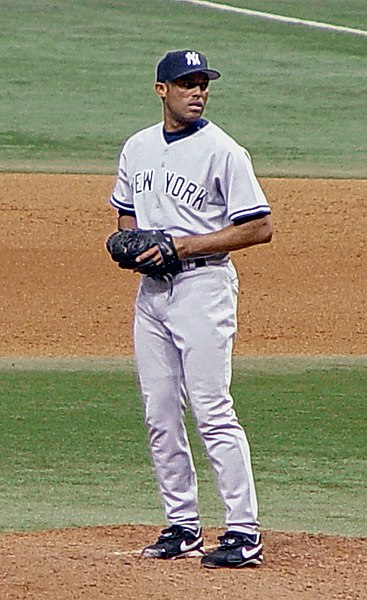“Talkin’ Baseball” (Detroit Tigers version), by Terry Cashman
And for our next installment in the “Talkin’ Baseball” collection, I present the version featuring the Detroit Tigers.
Find all Talkin’ Baseball posts here.
And for our next installment in the “Talkin’ Baseball” collection, I present the version featuring the Detroit Tigers.
Find all Talkin’ Baseball posts here.
On January 30, 1919, the Commission on Rules of the Major Leagues discussed the possible elimination of the intentional walk, but no action was taken. The proposal was brought up again on February 9, 1920 by team owners, who wanted to promote scoring and attendance during the Dead Ball Era. The measure never passed, however, and the intentional base-on-balls remains a part of the game today.

Base-stealing is easily one of my favorite plays in baseball. It requires more than just speed — it requires an ability to read a pitcher, a good sense of timing, and great reflexes. I like how this poem by Robert Francis captures the dance of the base runner as he waits for that perfect moment to take off.
*
Poised between going on and back, pulled
Both ways taut like a tight-rope walker,
Fingertips pointing the opposites,
Now bouncing tiptoe like a dropped ball,
Or a kid skipping rope, come on, come on!
Running a scattering of steps sidewise,
How he teeters, skitters, tingles, teases,
Taunts them, hovers like an ecstatic bird,
He’s only flirting, crowd him, crowd him,
Delicate, delicate, delicate, delicate – Now!

In an effort to speed up the pace of the game, in 1955, Major League Baseball announced a new rule that required a pitcher to deliver his pitch within 20 seconds of taking a pitching position.
By today’s rules, that time limit is down to twelve seconds:
8.04
When the bases are unoccupied, the pitcher shall deliver the ball to the batter within 12 seconds after he receives the ball. Each time the pitcher delays the game by violating this rule, the umpire shall call Ball. The 12-second timing starts when the pitcher is in possession of the ball and the batter is in the box, alert to the pitcher. The timing stops when the pitcher releases the ball.
The intent of this rule is to avoid unnecessary delays. The umpire shall insist that the catcher return the ball promptly to the pitcher, and that the pitcher take his position on the rubber promptly. Obvious delay by the pitcher should instantly be penalized by the umpire.
______________________________________________
“2012 Edition: Official Baseball Rules.” MLB.com. Commissioner of Baseball, 2011. Web. Accessed 24 January 2014. http://mlb.mlb.com/mlb/downloads/y2012/Official_Baseball_Rules.pdf
To continue our journey through Terry Cashman’s “Talkin’ Baseball” variations, here is the version that celebrates today’s only Canadian team, the Toronto Blue Jays.
To get all “Talkin’ Baseball” videos posted on this blog thus far, click here.
The year 1971 turned out to be a rough one for Baseball Hall of Fame candidates. That year, no player received the necessary three-fourths of the votes to be elected into the Hall. The two players who came closest were Yogi Berra (with 67.2% of the votes) and Early Wynn (66.7%). Both players would be elected into the Hall of Fame the following season.

Purely for the sake of variety, I thought today I’d post a couple baseball jokes to end the workweek. The first one, I’ve heard before. The second one was new to me. Whether you’ve heard them or not, I hope you get a laugh out of these.
___________________________________________________________________________________
Bob didn’t believe that Fred’s dog could talk. So Fred asked his dog, “What’s on top of a house?”
“Roof,” the dog barked.
Bob wasn’t convinced. So Fred asked the dog how sandpaper feels.
“Rough.”
He still wasn’t convinced.
“O.K., who was the greatest baseball player of all time?” Fred asked the dog.
“Ruth.”
With that, Bob walked away, shaking his head in disbelief. The dog turned to Fred and asked: “Was it Hank Aaron?”
***
A rookie pitcher was struggling at the mound, so the catcher walked out to have a talk with him.
“I’ve figured out your problem,” he told the pitcher. “You always lose control at the same point in every game.”
“When is that?”
“Right after the national anthem.”
Here’s an ofrenda created in memory of baseball teams throughout history that have relocated. For those who are not aware, ofrenda means “offering” in Spanish, and they are altars set up to honor and remember ancestors during Day of the Dead (Dia de los Muertos) celebrations. Typically, and ofrenda is set up on a table, covered with a fine table cloth, and set with offerings to those who have passed.
I love the clash of baseball and Mexican culture depicted in this graphic. It’s a clever tribute to teams like the Boston Braves, Brooklyn Dodgers, Montreal Expos, and several others that have relocated and become new ball clubs.
